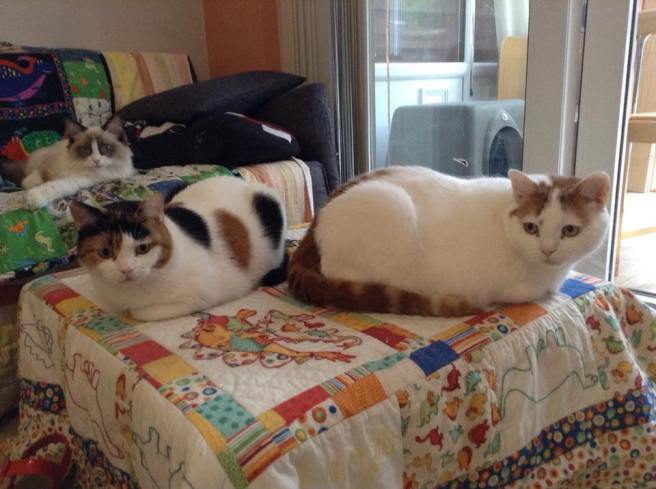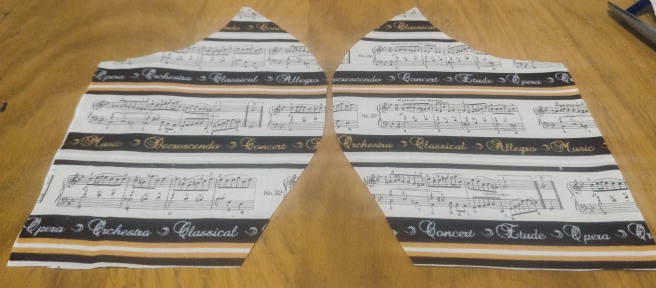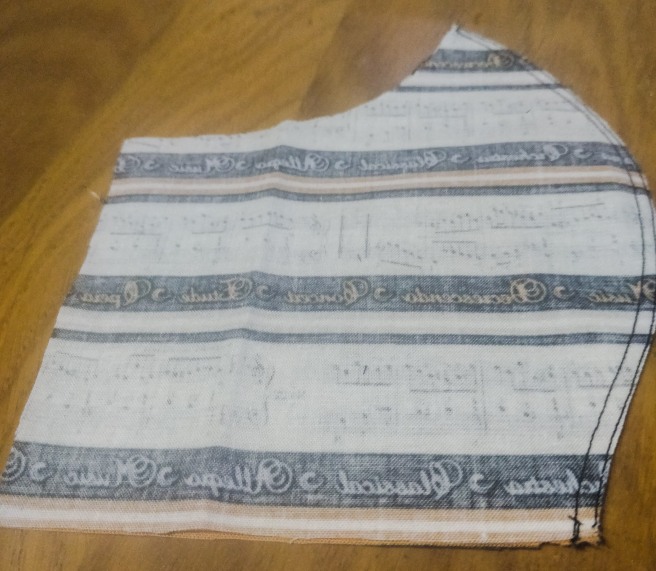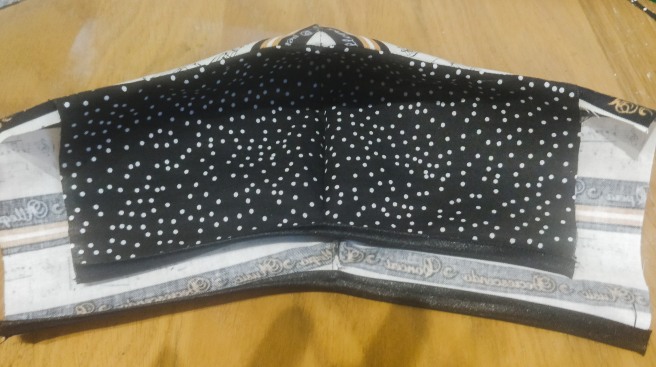CW for griefhammers
Soon after I started this blog, I wrote about my father-in-law, and about the pen he left to me when he died. I thought I’d write something similar about my mother-in-law, who died a week ago. So this is a bit fresh. It’s also a memoriam in the context of an object. Not a pen this time, although she did leave me one. It was a Parker 61, and unfortunately it’s unusable because the nib’s too damaged.
Anyway. My Beloved has often said it’s sad that I never got to meet MIL when she was at full strength, as a whip-smart, energetic woman who was active in the community. By the time I did meet her, she was already in poor health. She’d had chemotherapy a few years previously, and it had done permanent damage to her body – especially her heart. The heart is particularly bad at recovering from damage on its own, because the cells don’t regenerate much. So she was permanently fatigued, fell often, and used a wheelchair or mobility scooter whenever she needed to move more than a few yards.
I’m going to interject at this point to put in a mini-rant. I was going to add it as a footnote but I think it’s too important. For some reason, a large number of people do not understand that many (probably the majority of) wheelchair users can walk. Do not hassle someone if you see them getting out of their car, walking round to the boot and getting out their own wheelchair before using it. This does not mean that they are faking. It means that the reason for their wheelchair use is something other than total paralysis of their legs. They can walk, but perhaps not very far, or very steadily, or without pain. It’s none of your fucking business why they use the wheelchair. Let them get on with it. If you see someone walking one day and using a wheelchair the next, that doesn’t mean that they’re faking it either. Lots of disabilities come with good days and bad days. Maybe they’re pacing themselves because they have a lot to do today. Maybe they were walking, despite pain, because they had to go somewhere without wheelchair access. Again: none of your fucking business.
OK rant over.
After I met my MIL, her health continued to decline. When my FIL died in 2016, the decline became steep. She moved into a nursing home late last year after a nasty fall. She died a week ago. At first we were told that the death definitely wasn’t caused by COVID-19, and then that it probably was. It wasn’t until after her death that the nursing home actually realised that the virus had got in and infected several other people, but it had finished MIL so quickly nobody even realised she had it. We don’t blame the nursing home for this in the slightest. They did their damndest to keep C19 out, but it’s a sneaky bugger that is quietly killing people like MIL in nursing homes all over the world right now. She would not have lived much longer had she not caught it.
But I don’t really want to talk endlessly about shitty health. I’m gonna talk about two elements that I did see. There was the relationship between my inlaws, who were utterly devoted to each other. He attended to every need of hers, constantly checking in and joking with her. This is the kind of relationship every married couple should have, but it’s not something everyone can depend upon. They met in middle age when both were already divorced, and the attitude of their relationship was pretty much “well, I got it wrong the first time around, but HELLA right this time.” They both adored my Beloved and when I showed up, regarded me as a daughter. Their relationship of calm, unconditional love towards each other was a model that my Beloved absorbed and is one of the reasons we have such a strong marriage.
The other thing I want to talk about is creativity, because that is a side of my MIL that I did see. She made patchwork quilts. When I say that, I don’t mean the wonky, wobbly-seamed creations of many an amateur sewing enthusiast. She made fricken weapons-grade heirloom quilts and she turned them out apace.

We have several of these quilts and they will probably last longer than I do. They appeared for all occasions. Passed exams? Quilt. New baby? Quilt. Ate a pizza? Quilt. I have a weighted quilt for soothing and cosying. Originally made by Esteemed Ex, it was starting to get a bit worn out by the time I got together with my Beloved. MIL repaired it, added bits and nursed it back into QUILT II: THE SOOTHENING.

The gorgeous thing about crafts such as knitting and sewing, is that whatever quantity of intelligence and creativity you bring to the party are the right amount. Wonky squares for dog blankets? Gonna have a cosy doggo. Incredible feats of artistry? Burn someone’s eyeballs, friend. They’re skills that most people can learn if they’re prepared to put in the hours, and like many things traditionally associated with women, they’re devalued by society. When women have felt frustrated by the barriers thrown in front of us, we have thrown ourselves and our brains into crafts. In the last few years, my MIL’s hands snarled up too with arthritis, and then her brain couldn’t quite manage those complicated sewing projects anymore. But all the many, many quilts she made before that are there, magnificent in all their details, showing something of the mind and personality of someone who isn’t here anymore.

And that is why I think that making stuff, whatever it is, is important. Every project, whether it’s a quilt or a story or a terrible set of jokes, holds in time like a trace fossil when everything else about you is gone. When I’m gone, there’ll be a bunch of fiction which will tell the story of who I am even though I’m not in it. That and a lot of other weird crap, because making weird crap is what I do.
I looked upon MIL’s sewing skills with awe, which I think she appreciated. Crafters are good at seeing just how much effort goes into craft projects – especially ones we couldn’t have managed ourselves. I often wished that I knew how to use a sewing machine properly.
My own mother bought a new sewing machine, a cheap Singer, when I was in my late teens. Evil Sister had expressed an interest in sewing. I got further with it that ES did, but not very far for a few reasons. It was around the end of the 1990s, and online retail was in its infancy. This meant that I was left with only what was available to buy in the local fabric shop, and none of it was inspiring. If you were a young person, engaged in the Wicked World of Haberdashery at this time, the 50- and 60-something women who ran fabric shops (and yarn shops) would look at you as though you were there in their shop to straight up murder them. In the end, I kept up with knitting(1) and sewing fell by the wayside. I’d sort of absorbed enough sewing knowledge to have a vague idea of what patterns looked like, how darts worked, and how to throw together an item of clothing which would be so poorly constructed it might actually fall apart in a comedy slapstick fashion at an unexpected moment.(2) But I didn’t have a lot of money. It’s possible to knit an acrylic sweater for £5. It’s not at all easy to sew decent-looking clothes cheaply. I would have had to put a lot of money into making something that looked a bit crap. That was the end of my sewing hobby, until 2012. In 2012 my MIL bought me this freaking thing.

It came as a total surprise. It was not my birthday. I didn’t ask her for a sewing machine. The closest I got to it was probably saying “hot damn you’re good with a sewing machine. I wish I could sew,” which really wasn’t a hint at anything. It was just admiration. Admiration which I now realise sounds a lot like someone coming to me and saying “hot damn, those fountain pens look nice to write with. I wish I had one.” That is not a person who gets to leave my house without a fountain pen. And so it was with the sewing machine. It was a Janome, because her machine was also a Janome, and she was pretty happy with hers, so why not?
I wanted to make use of this unexpected gift. I couldn’t take up quilting, because I knew I’d just stare at my MIL’s quilts, compare them with whatever I made, and silently die inside. So I made some faltering attempts at making clothes. At the time, we were living in a very small, very depressing flat, and there just wasn’t a flat surface of any size to sew on. I ended up putting it on the kitchen counter, but even that available was barely eighteen inches by two feet. I mostly taught myself to sew. Which means that, to this day, I’m probably doing a lot of things wrong.
Sewing (with a machine) is very different from knitting. With knitting, you can teach someone the basics in under ten minutes and they’re away. Oh sure, they’ll make mistakes. That scarf will have holes, it’ll be uneven, and it’ll probably end up getting gradually wider and wider as the length increases.(3) But you have something to build upon, and from there, you just put in the hours. Sewing isn’t like that. Sewing machines are pretty amazing engineering, really. They were a colossal pain in the arse to invent, and the first reliable sewing machines appeared on the market only about forty years before the first reliable cars. Admittedly, there was a bit of a problem with enraged tailors burning down workshops where these machines were being developed. But it wasn’t just that.
The movements involved are tiny and precise. It’s quite the challenge to make the various little parts doing tiny movements, synchronously, work consistently with different types of fabric and thread. These days, sewing machines are beautifully designed, and fairly consistent from one brand to the next. But they still look like alien technology when you first try to set one up, and then they behave like they’re out to get you. Over and over, the machine laughs at you. The bobbin won’t load, or it loads wonkily, and then you can’t get the lower thread to join, and then the thread breaks all the time, the stitches come straight out, or turn into a huge loopy mess, or they just look wrong for some reason and you don’t know why.
At first the only thing you can do is open up the manual and go about setting it all up again, EXACTLY as directed. The thread has to take an exact route from the spool to the needle: a sort of weird loopy obstacle course. Then it must go through the needle without getting caught around it, under the foot and be lined up perfectly. If you don’t get it exactly right your stitches will go to shit. The bobbin, likewise, has to be wound evenly, placed correctly, lined up right, and then the two threads are joined in stitchy harmony via a combination of lifting the foot (the machine’s foot, not yours), turning the thing the right amount, sweeping the threads out and putting the foot back. Once you’ve done all of these things a million times it is quick, easy and automatic. At first, however, you spend more time wondering why your machine won’t sew properly than you do actually sewing.
Sewing machines can smell your fear. We had a few sewing machine classes at school – perhaps two or three – which focused on making bags that nobody wanted. Which was just as well, because nobody managed to make one successfully. It was exactly the correct amount of time to teach adolescents with short attention spans that all sewing machines are possessed by the spirits of axe murderers and that they hate all of humanity.(4) The learning curve when you start to sew is steep. It’s frustrating. It feels like you aren’t managing to get anywhere with this damn thing. But eventually you start to realise where things have gone wrong, and discover it’s the same three mistakes that you’ve made over and over.
I got past those mistakes. Well. Mostly. I still have that Janome, and I use it pretty much every day now, and I’ve made a butt ton of stuff with it. Even now it throws the odd tantrum here and there, but mostly I can fix whatever’s going wrong. And when it does misbehave, I start remembering that I was supposed to get it serviced every year, and I’ve had it for eight years, so it’s probably about time to look into that… I feel guilty as though it’s actually sentient. Because it is sentient, and it’s waiting for a chance to kill me. It’s far and away the best not-even-my-birthday-this-is-a-bit-weird-but-thanks gift I’ve ever received.
Which brings me onto the current usage thereof. As governments around the world have started saying “wear medical masks! But don’t buy medical masks, because we need those for healthcare workers. So… I dunno. Wrap a sock round your head or something,” every motherfucker with a sewing machine has been making fabric masks at home. When I decided to make some reusable masks for my parents, a few weeks ago, I asked if anyone else wanted one. Nobody did. That’s cool, I thought. I’ll make a few and be done.
Then a trickle of people started expressing an interest in masks. Then it was more. Then really quite a lot of people. Now it’s a flood. It’s all good. I have you quite literally covered, buddos. They’re quick to make, the materials are inexpensive, and it keeps me out of trouble. I don’t like the idea of making a profit from an international crisis, so I just suggested that people make a donation to Mind (the UK mental health charity) in return.(5) I must have made 40-50 of them now, and demand hasn’t let up yet. Here’s the current stockpile, between sending out batches.

I’m using the machine that my MIL bought me, to help fight the disease that ultimately killed her. I think she’d like that. I wasn’t going to write a how-to post, originally, because there’s no shortage of differing schools of thought on the best way to make a mask. I’ve read/watched a lot of it. You can overthink this. I know, because I overthink absolutely everything. But since I’ve been asked a few times now, I’ll put in writing what it is that I do. If you’re not here for the Blue Peter type instructions, off you trot.
Heckin Masks: A Tutorial
This is a mask I’m making for my buddo Noel, an excellent chap and excellent countertenor.
I started with this pattern from Instructables. It’s a good pattern as it is, but I’ve modified it a little. The main modification is that I add around 4cm to the bottom of piece A. The reason for this will become clearer later. I’ve also changed the placing of the elastic, as I’m not keen on having it round my ears. The X shape that I settled on is more secure.
You will need:
- Cotton or polycotton woven fabric. Quilter’s cotton is good, but so is the stuff used for bed linen or shirts (of the buttoned variety. Not t-shirts. You don’t want anything stretchy).
- Thread, obviously.
- Bias binding: about 50cm.
- 50cm elastic.
Use an appropriate needle for the fabric (probably 80/12) and a fairly short stitch: 2.2mm is good.
Cut your bits: two of A (with the extra 4cm strip at the bottom) and two of B (without anything extra).

Putting right sides together, stitch along the curved centre seam. You can clip this seam at intervals to make the curve neater, but that also makes the seam weaker. I do a second line of stitching, a couple of mm away from the first one, and then trim up as close to it as possible. This type of fabric doesn’t tend to fray too badly, so you probably won’t need to worry about zigzagging the edge.

Stitch a piece of bias binding to the lower edge of each piece. If you don’t know how to use bias binding, you’re probably best off watching this youtube video. It’s easier than me explaining. Don’t worry about finishing the ends of these bits, because they’ll be tucked inside seams.
Putting right sides together, stitch A to B across the top. Again, you can clip the seam, or add another line of stitching and trim.
Turn the piece back to the right side. It should look like this.

Looking at the back of the mask, take a lower corner of A and fold it upwards a little to overlap with the lower corner of B. Then fold the side edge of A over twice, so that the raw edge is covered. The edges of both lines of bias binding should be within this fold.

Repeat on the other side and pin in place. Press the mask under the hottest iron setting your fabric can tolerate, taking care to get some nice crisp seams going on.
Stitch the side folds down.
Take another piece of bias tape (or ribbon) of around 15cm in length. Find the centre and pin it on the back of the mask, just below the peak at the centre. Pin it to right and left, tucking the last 5mm at each end underneath so that there are no raw edges. Stitch this in place.

Nearly there. Cut two 25cm pieces of elastic. Using a zigzag stitch, attach one piece to the top left and bottom right corners on the back of the mask and the other piece to the other two corners so that they form an X.
And that’s basically it.

At this point, you’ve got a functional mask. I like to add a filter because they help a bit in adding a bit more protection. People use different materials for these: some advise coffee filter papers or vacuum cleaner bags material. I don’t use these because they’re just a bit TOO good at filtering, ie: you can’t breathe through them. You don’t want to make a mask that restricts your breathing so much that you’re deliberately breathing through gaps. There will be some gaps, obviously. This is no N95 mask. The filter is another layer, but there’s no seal there.
So what I use is these blue shop towels that were found to be surprisingly effective at blocking particles. They’re basically just kitchen roll with ideas above its station, but they’re a touch thicker and more resilient, and the fibres are more compact which is what we want here.
This next bit is actually the most annoying bit. You need to get the right shape. I don’t have a pattern for these but you want to get the filter paper to fill as much of the space inside the mask as possible, bearing in mind that there are side bits and the top strip where the bias binding is, so it’ll be smaller than the main shape of the mask. Once you’ve got it, cut a million of them, because you’re gonna use a fresh one each time you use the mask. Throw a quick, careless seam down it. Ain’t nobody care if this one looks good.
(I know these look like different shapes, but that’s just the camera angle.)
When the mask is ready to use, take a 15cm pipe cleaner (or a longer one and fold it) and insert it behind the bias tape on the top back of the mask. When you put the mask on, you’ll squish this against the bridge of your noz, which makes a better seal and all round better fit. You’ll need to change both the pipecleaner and the filter each time, and make sure neither ends up going through the wash or you’ll end up with a big mess.
And off you go to Sainsbury’s. Stay safe, postapocalyptic buddos.

- The search for non-hideous knitting patterns at the time is another story.
- Like… at a friend’s house, when I was nineteen. It would have been just like the beginning of a porn shoot except that she laughed herself stupid, I died from embarrassment, and then she went to find the safety pins. We never did get it on.
- Novice knitters have often confided in me that their first project was a scarf that got wider and wider, as though they’re the only one. They’re not. It happens to every first-time knitter, and the reason is always the same.
- It is true that when the machines rise up against us, the sewing machines will be the most bloodthirsty. Anyone who has sewn straight through their finger (as I have) will confirm this. Theirs is a petty hatred that bides its time.
- Incidentally, while making a profit from these things is not for me, I don’t judge others who do. There are a bazillion masks on Etsy and most of them are very reasonably priced. If those crafters are turning a profit, it’s a modest one.





I am so sorry for your loss. You write beautifully about her and you are doing a wonderful thing. Her quilts ARE stonkingly weapons-grade. Hugs to Tiny.
LikeLike